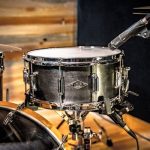Crafting smooth lofi beats hinges on selecting the right drum sounds that blend warmth, texture, and subtle imperfections. Essential lofi drum kits combine dusty snares, mellow kicks, soft hi-hats, and rich percussion to create that signature laid-back vibe. Understanding these core elements unlocks new creative possibilities and elevates your production beyond basic loops and samples.
Download Top Essential Lofi Drum Kit Sounds
Discovering the right lofi drum samples is crucial for creating smooth lofi beats that capture the genre’s relaxed, nostalgic vibe. Many producers seek downloadable lofi drum kits that offer a carefully curated selection of sounds kicks, snares, hi-hats, and percussion that can be used straight away without extensive tweaking.
Also read : Ultimate Handbook for Boosting Performance and Enhancing Security of Your VPN on ASUS RT-AX86U Router
These downloadable lofi drum kits typically include audio previews, giving beatmakers a clear idea of each element’s character and how they blend together. For example, the kicks often feature a soft, muffled tone with subtle vinyl crackle effects, while the snares provide a warm, old-school snap. Hi-hats and percussion samples round out the pack with gentle, textured rhythms perfect for layering intricate beats.
Most sample packs provide immediate access upon purchase or free download with instant file availability in popular formats like WAV and MP3. This ensures compatibility with a wide range of digital audio workstations (DAWs) and lets producers dive right into crafting their smooth lofi beats. For those interested in capturing that signature chilled vibe, exploring a high-quality lofi drum kit can be a game-changer in elevating the sound of your projects.
Also to discover : Maximize Your Storage Potential: The Ultimate Guide to Optimal RAID Configurations with QNAP TS-673A NAS for Small Enterprises
Descriptions of Key Lofi Drum Kit Sounds
Lofi drum kits are defined by their distinctive sound characteristics that create an atmosphere of warmth and nostalgia. The core elements include lofi kicks and snares that carry a uniquely textured and mellow tone. These kits often feature warm kicks with a slightly compressed, rounded punch that avoids the harshness of modern drum sounds. This contributes to their signature vintage flair, evoking classic analog equipment or old school samplers.
In addition, dusty snares play a crucial role by adding a layer of character through subtle saturation and noise artifacts. Their softness contrasts well with the depth of the kick, producing a rich, homely vibe. Complementing these are soft hi-hats, which tend to be delicate and lightly processed to avoid overpowering the mix, contributing to the overall smooth percussion feel.
A defining trait of lofi drum sound characteristics is the textured percussion, including elements such as brushed cymbals or vinyl crackle. These textures add a sense of space and imperfection, imbuing the rhythm with human-like nuances that digital precision often lacks.
To assemble an essential lofi drum kit combination, focus on including:
- Warm, round kicks for foundational depth
- Dusty, saturated snares for character
- Soft, subtle hi-hats to maintain rhythm without harshness
- Textured percussion to enrich the soundscape
These components collectively deliver the mellow tone and vintage saturation that lofi beats are famous for, making the drum kit a vital part of the lofi music aesthetic. For producers looking to experiment with these sounds, exploring various saturation levels and layering techniques can help achieve a more authentic and compelling lofi drum sound. *
Tips for Crafting Smooth Lofi Beats with Drum Kits
When working on lofi beatmaking tips, the foundation lies in understanding the basic beat structure and how to layer drum sounds effectively. Start by selecting a core lofi drum kit that matches the vibe you want—often including warm kicks, soft snares, and textured hi-hats. Layering these elements thoughtfully creates a natural groove that feels both relaxed and engaging.
A key technique to enhance smooth lofi production is applying swing to your beats. Swing slightly delays some drum hits, adding a humanized, laid-back feel that’s essential in lofi music. Avoid rigid quantization; instead, use subtle quantization or manually adjust beat placement to maintain an organic flow. Incorporate effects like gentle vinyl crackle, subtle reverb, or tape saturation to reinforce the chill aesthetic.
Experimenting with your lofi drum kits is crucial. Try swapping out individual drum hits, changing pitch, or introducing unconventional percussion sounds to expand your sonic palette. For example, layering a mellow rimshot over a standard snare can add complexity without cluttering the mix. Utilizing effects chains creatively like filtering hi-hats to smooth out harsh frequencies can drastically alter mood and texture.
Format Compatibility and Kit Usage Instructions
When working with a lofi drum kit, understanding the available formats is essential for seamless integration into your music production setup. Most lofi drum kits come in widely supported formats such as WAV and AIFF, ensuring broad compatibility across digital audio workstations (DAWs). The WAV format is especially favored because of its lossless quality and universal acceptance, making it the go-to choice for producers seeking crisp and authentic sound textures.
Importing a lofi drum kit into your chosen DAW be it Ableton, FL Studio, or Logic Pro is generally straightforward. For Ableton Live, simply drag the WAV files from your file browser into the Drum Rack or Sample Player. In FL Studio, you can load the samples into the Channel Rack by browsing and selecting the appropriate files, ensuring the kit is ready for sequencing. Logic Pro users can import the files directly into the EXS24 sampler or the Quick Sampler plugin, enabling quick manipulation of individual drum hits.
Occasionally, producers encounter issues such as missing samples or files not loading correctly. A common troubleshooting step is to verify the file format compatibility confirm that your DAW supports the WAV or AIFF format provided. Another tip is to check for correct file paths; renaming or moving files after installation can cause the DAW to lose track of them. Additionally, ensure your DAW is fully updated, as outdated software versions sometimes lack support for newer sample formats.
For enthusiasts eager to elevate their workflow, a well-organized folder structure for your lofi drum kit simplifies both installation and future access. Categorizing samples by type kicks, snares, hats, and percussion helps speed up beat-making sessions.
Free and Paid Lofi Drum Kit Recommendations
Choosing between free lofi drum kits and paid lofi drum kits often comes down to your production needs and budget. Free lofi drum kits provide an excellent starting point, especially for beginners or those exploring the genre without financial commitment. Many trusted sources offer curated free drum kit downloads that include vintage-sounding kicks, snares, and crunchy hi-hats perfect for capturing that classic lofi vibe.
On the other hand, paid lofi drum kits tend to offer higher-quality samples with refined textures, unique sound designs, and more comprehensive content. Top-rated paid lofi drum packs often include not only individual drum hits but also loops, one-shots, and MIDI patterns that accelerate your workflow. These packs are crafted by experienced producers who have meticulously layered sounds to achieve warm, organic drum tones ideal for lofi beats.
When considering whether to invest in free or paid lofi kits, think about your workflow requirements. If you want quick drag-and-drop usability with a wide variety of sounds, a paid kit might be worth the investment. However, free lofi drum kits can serve as valuable resources to experiment with different styles and techniques without upfront costs.
If you’re looking to enhance your productions further, exploring different kits both free lofi drum kits and paid lofi drum kits can keep your beats fresh and dynamic.











